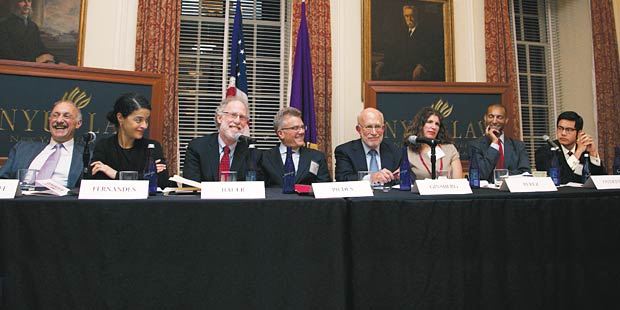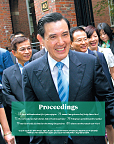Righting Voting Wrongs
An eclectic group of electoral experts convening for the Alumni Association’s Annual Fall Conference had strong prescriptions for how to fix the current system.
Printer Friendly VersionDespite their differences, the voting law experts who gathered last November for the NYU Law Alumni Association’s Annual Fall Conference all seemed to agree that the electoral system is in a state of disarray.
Moderator Richard Pildes, Sudler Family Professor of Constitutional Law, laid out two broad sets of issues: “the constant embarrassment we seem to have with respect to our voting systems in elections” and the consequences of the Supreme Court’s opinion in Shelby County v. Holder, which effectively defanged the section of the Voting Rights Act requiring municipalities with a history of electoral discrimination to obtain federal preclearance for any changes to voting laws or procedures.
Robert Bauer, distinguished scholar in residence and senior lecturer at NYU Law as well as co-chair of the Presidential Commission on Election Administration, explained that identifying current electoral problems is more straightforward than solving them. Bauer, who is also general counsel to the Democratic National Committee and former White House counsel, said that the obvious problem of long lines—a notorious emblem of the 2012 election that prompted Barack Obama to say in his victory speech, “We’ve got to fix that”—could stem from multiple causes, including polling place mismanagement, long and complicated ballots, and dysfunctional machinery, showing how unexpectedly complex reform can be.
Samuel Issacharoff, Bonnie and Richard Reiss Professor of Constitutional Law, described a conflicted bipartisan environment that is much more complicated than the Democratic Jim Crow South had been, and suggested that the courts were working to construct a new constitutional doctrine protecting voting integrity and the electoral process against insiders’ manipulation.
Adjunct Professor Myrna Pérez, deputy director of the Democracy Program at NYU Law’s Brennan Center for Justice, described legislative trends regarding voting rights in states around the country. While 2012 was a banner year for attempts to restrict the franchise, she said, 2013 had seen far fewer such bills introduced. “We need to continue the effort to make restricting the right to vote toxic,” she said, adding that the effective dismantling of Section 5 of the Voting Rights Act translated into more resources being expended on litigation.
Speaking directly to that sea change in litigation was Dale Ho, director of the ACLU’s Voting Rights Project. Rather than cutting off potentially discriminatory voting laws before their implementation, he said, victims of such laws can now mount challenges only after the fact. Ho predicted worse problems in more places now that the burden of proof is on plaintiffs. “We have an uphill battle ahead of us, but at least it’s exciting,” he said wryly.
In a spirited speech, Julie Fernandes, a senior policy analyst at the Open Society Foundations, also pondered the end of preclearance. “Post hoc remedies don’t work very well in our world,” she said. “In the world of elections, once an election happens, it’s over. No one cares.”
—

